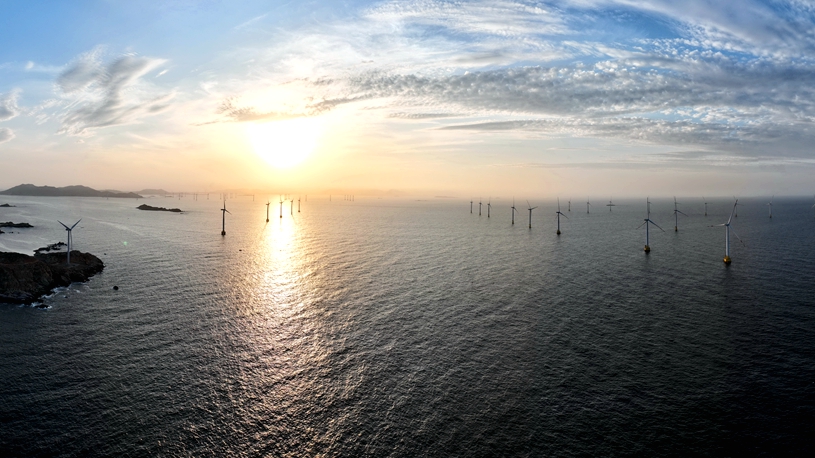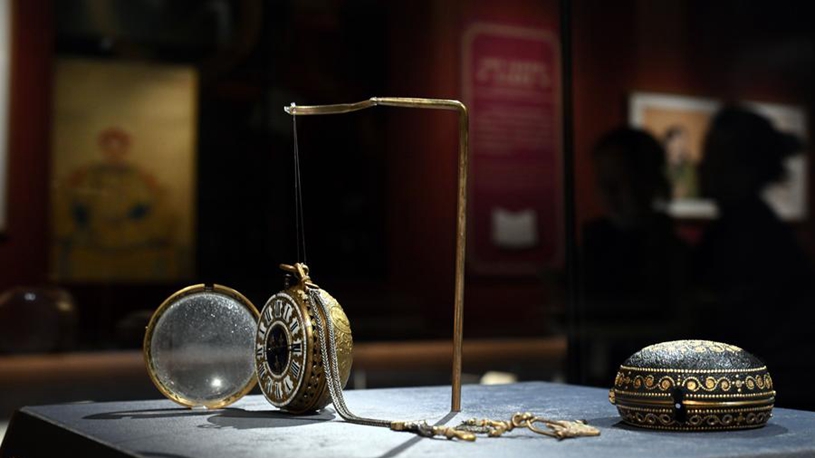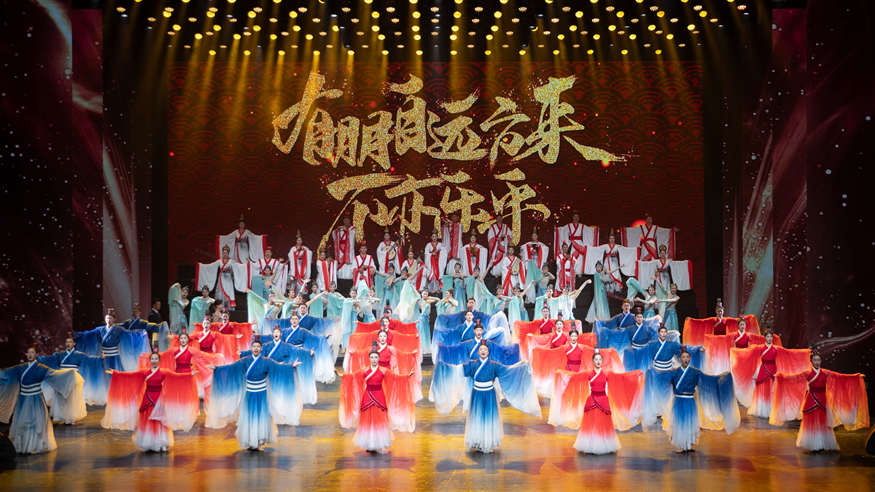By Xinhua writer Yuan Quan
JIUQUAN, May 19 (Xinhua) -- The weather in northwest China toward the end of spring is far from pleasant -- dry, windy and dusty. Despite frequent sandstorms, thousands of people are still drawn to visit because of the space launches.
Recently, I had the opportunity to spend a few days at "Dongfeng Space City" near the Jiuquan Satellite Launch Center, where I covered the launch of the Shenzhou-18 manned spacecraft. This experience provided me with an up-close glimpse into China's captivating enthusiasm for space-themed tourism.
For visitors, the quickest way to travel from Beijing to Jiuquan Satellite Launch Center is by flying to Jiayuguan Jiuquan Airport and then taking a four-hour drive to the city itself. The view through the car window reveals the vast expanse of the Gobi Desert, with the scorching sun casting its rays upon the "lonely" road. It is a landscape with little greenery and few buildings or other signs of human life.
This unchanging scenery persists until the emergence of "Dongfeng Space City," which is a small oasis of humanity amid the desert. The term "dongfeng" means "east wind" in Chinese.
Inside the Space City, you'll find a whole new world: a park, a cinema, a clinic, a supermarket, hotels, restaurants, bakeries and clothing stores. There's even a farmers' market and a popular milk tea stand, giving visitors the impression that they're in an ordinary Chinese town. It is only when you come across roads named after "Taikong" (aerospace) and "Yuzhou" (cosmos) that you truly grasp the unique identity of this area. Local people have even designed the streetlights here to resemble rockets launching spacecraft.
Although many buildings, built in the 1960s and 1970s, look quite plain, the slogans on guide-boards here are poetic, such as "The Gobi may be bitter, but Dongfeng is sweet;" "Make a wish to space, get together in Dongfeng;" and "Our triumph awaits in the stellar sea."
The "Wentian Pavilion" is a must-visit spot. In Chinese, "Wentian" means "asking heaven," and the pavilion serves as a working and living area for taikonauts in the Space City. Before every manned space launch, a departure ceremony takes place right outside the pavilion, offering a rare opportunity for the public to get up close to taikonauts.
The departure ceremony for the Shenzhou-18 crew lasted only about a few minutes, but people in the Space City gathered in the pavilion several hours in advance. The square in front of the pavilion soon transformed into a vibrant "sea of red," with hundreds of people waving flags joyfully. Some were blowing horns and beating drums, and some were lifting children onto their shoulders. There were even those who livestreamed on their smartphones. Everyone eagerly anticipated catching a glimpse of the space heroes.
The Space City is where the Chinese aerospace dream begins. In 1970, China's first man-made satellite "Dongfanghong-1" was launched from the Dongfanghong satellite launch site. The launch site is now a 40-minute drive from the Space City. In 2018, after renovations, the Dongfanghong satellite launch site became a patriotic education base. Visitors can see two retired rocket launch towers. An exhibition hall nearby commemorates the journey of researchers who triumphed over the challenges of launching this ground-breaking satellite.
The current launch site is called the "Jiuquan Satellite Launch Center," and it is renowned for being China's only manned space launch site. It takes half an hour by car to travel from the center of the Space City to the site. The public viewing area is a spacious playground. Keen space fans bring tents and telescopes, waiting for the moment when rockets thunder skyward. Nearby is an observation platform where the local tourism bureau organizes cultural performances before the launch.
Ten seconds before the rocket ignites, the crowd begins a countdown, and then with a thunderous roar, the rocket soars into the night sky. People at the scene can feel an immense wave of heat washing over them, and their eyes are captivated by the brilliant flames. At that moment, it feels as if the world falls silent, with all sound fading away, but a warm surge rushes through the heart.
Seven kilometers away from the launch site is the "Dongfeng Revolutionary Martyrs Cemetery." Here lie hundreds of heroes who dedicated themselves to the cause of aerospace, including generals, soldiers, scientists and technicians from China, as well as herdsmen who gave up their homeland for the cause. The names of the deceased Dongfeng people are engraved on the "Wall of Honor," with a QR code next to each name linking to their life stories.
There is also a souvenir shop in the Space City where you can buy refrigerator magnets and first-day covers, as well as various models of rockets, satellites and astronauts.
Visitors to the Space City are often recommended to taste the "Aerospace Milk" and "Aerospace Yogurt." At first, I didn't find the taste particularly special, but once I learned that they were produced from the exclusive pastures of the launch site, the drinks seemed to take on quite different flavors. Visitors can also taste grapes, watermelons, tomatoes, and other fruits and vegetables from the greenhouse at the launch site.
Nearby counties have also benefited from the tourism boom. The tourism bureau in Jinta County, Gansu Province, said that all 5,000 hotel beds in the county were fully booked a week before the launch of the Shenzhou-18. The local government plans a luxurious five-star hotel to meet the growing demand.
The aerospace cause is both lofty and down to earth. It matters not only for space exploration but also for economic and social development, and the booming space-themed tourism is the best illustration of this.
Space-themed tourism has come under the spotlight ahead of National Tourism Day, marked annually on May 19. I believe more industries, such as culture and education, will integrate with this burgeoning sector, providing further upward momentum for tourism. ■










